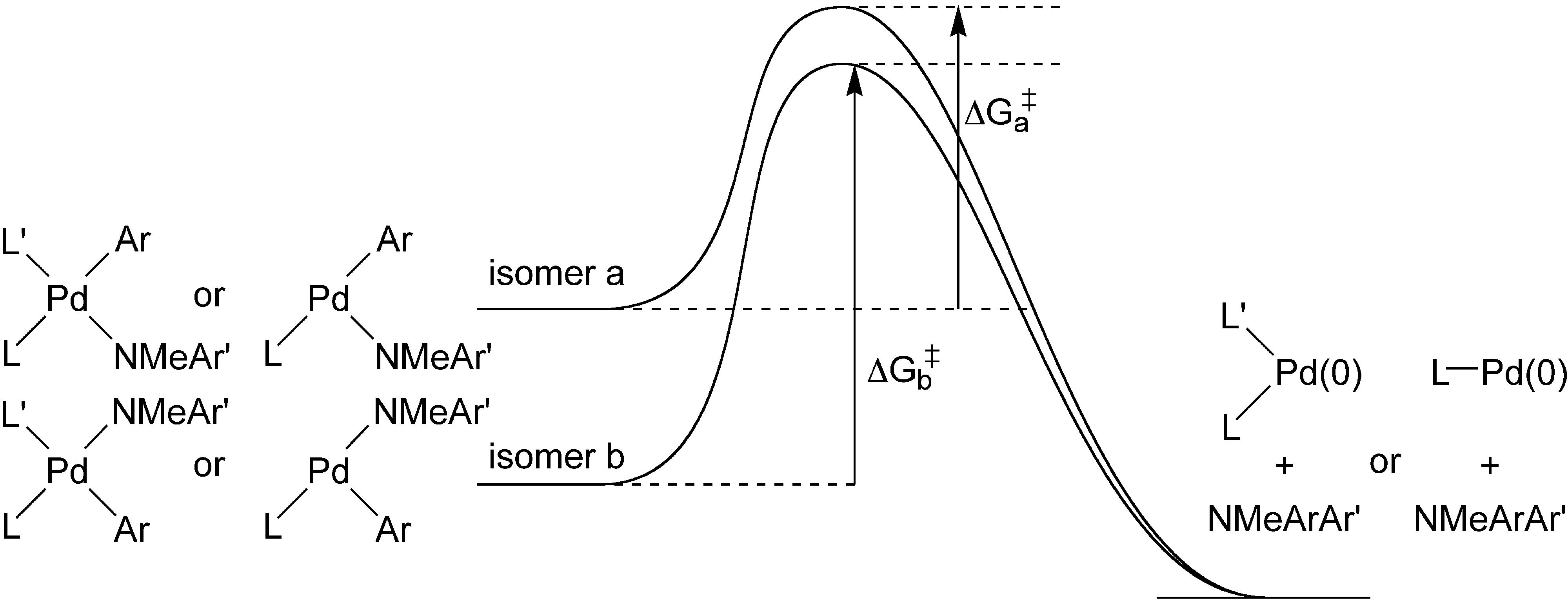Trans Influence on the Rate of Reductive Elimination. Reductive Elimination of Amines from Isomeric Arylpalladium Amides with Unsymmetrical Coordination Spheres

To determine the trans effect on the rates of reductive eliminations from arylpalladium(II) amido complexes, the reactions of arylpalladium amido complexes bearing symmetrical and unsymmetrical DPPF (DPPF = bis(diphenylphosphino)ferrocene) derivatives were studied. THF solutions of LPd(Ar)(NMeAr‘) (L = DPPF, DPPF−OMe, DPPF−CF3, DPPF−OMe,Ph, DPPF−Ph,CF3, and DPPF−OMe,CF3; Ar = C6H4-4-CF3; Ar‘ = C6H4-4-CH3, Ph, and C6H4-4-OMe) underwent C−N bond forming reductive elimination at −15 °C to form the corresponding N-methyldiarylamine in high yield. Complexes ligated by symmetrical DPPF derivatives with electron-withdrawing substituents on the DPPF aryl groups underwent reductive elimination faster than complexes ligated by symmetrical DPPF derivatives with electron-donating substituents on the ligand aryl groups. Studies of arylpalladium amido complexes containing unsymmetrical DPPF ligands revealed several trends. First, the complex with the weaker donor trans to nitrogen and the stronger donor trans to the palladium-bound aryl group underwent reductive elimination faster than the regioisomeric complex with the stronger donor trans to nitrogen and the weaker donor trans to the palladium-bound aryl group. Second, the effect of varying the substituents on the phosphorus donor trans to the nitrogen was larger than the effect of varying the substituents on the phosphorus donor trans to the palladium-bound aryl group. Third, the difference in rate between the isomeric arylpalladium amido complexes was similar in magnitude to the differences in rates resulting from conventional variation of substituents on the symmetric phosphine ligands. This result suggests that the geometry of the complex is equal in importance to the donating ability of the dative ligands. The ratio of the differences in rates of reaction of the isomeric complexes was similar to the relative populations of the two geometric isomers. This result and consideration of transition state geometries suggest that the reaction rates are controlled more by substituent effects on ground state stability than on transition state energies. In addition, variation of the aryl group at the amido nitrogen showed systematically that complexes with more electron-donating groups at nitrogen undergo faster reductive elimination than those with less electron-donating groups at nitrogen.
Read more on publisher's site.